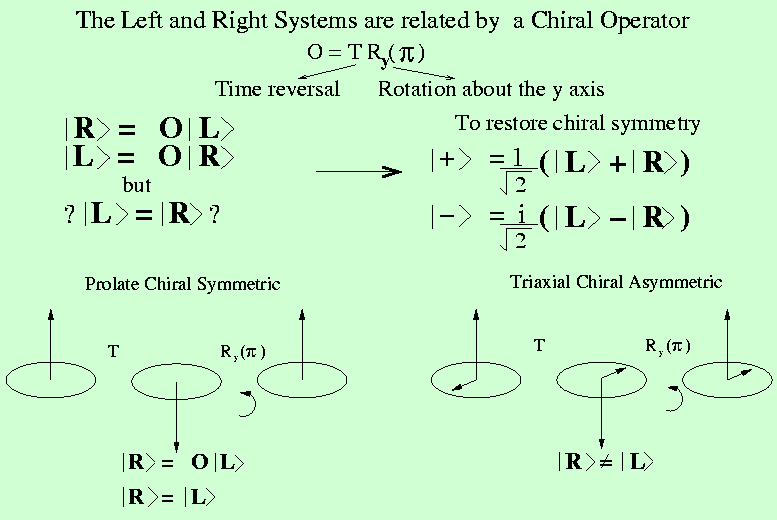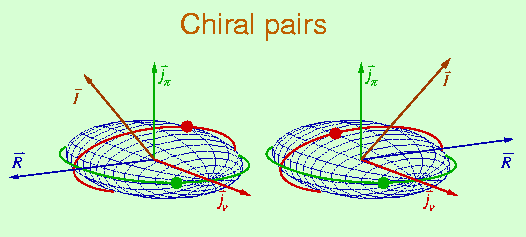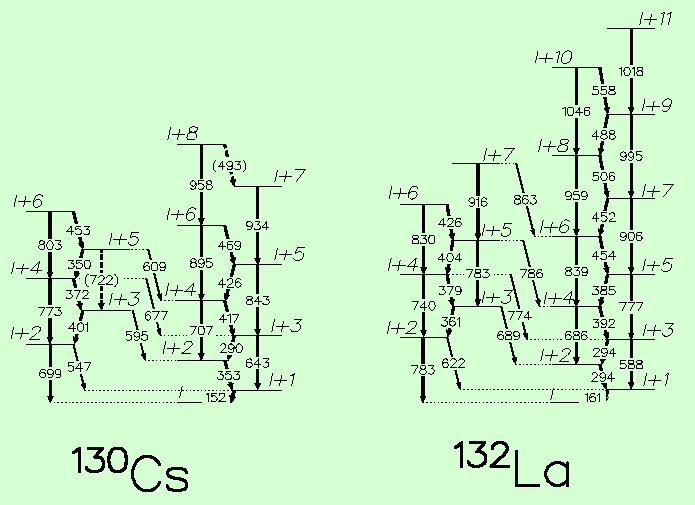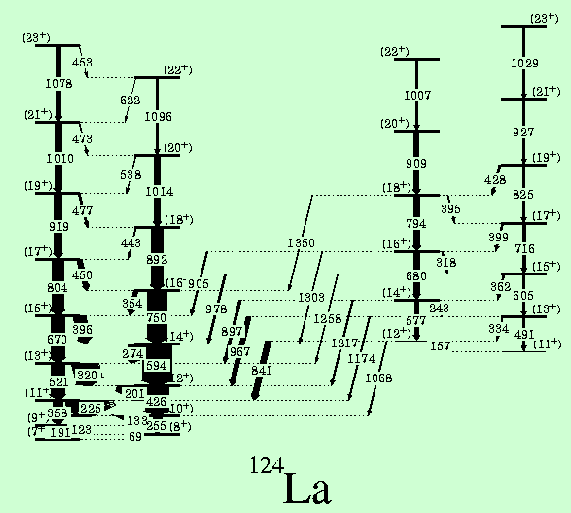
Chirality has been observed in many molecular structures but only recently has this phenomenon been attributed to Nuclear Structure. The definition is given when two structural forms are seen to have mirror images of one another referred to as left and right handed forms, atomic nuclei having this characteristic of `handedness' when spinning around an asymmetric axis.

It has been seen that chirality exists when the nuclei has axes of three different lengths, in other words is triaxial. Spontaneous chiral symmetry breaking can occur in triaxial doubly odd nuclei for configurations where the angular momenta of the valence proton, the valence neutron and the core are mutually perpendicular.

The experimental evidence for chirality is the observation of pairs of closely spaced energy states with the same amounts of angular momentum that correspond to otherwise identical nuclei. A couple of examples of `Chiral Doublets' can be seen below.

As the chirality boundaries are always trying to be extended recent studies have looked at lighter nuclei. 124La has been studied and a level scheme that shows twin bands has been constructed. It can be seen though that these twin bands have a large energy difference and with theory predicting a more prolate than triaxial shape, chirality may not be seen within this nucleus.

To learn more about Chirality look at Dr Krzysztof Starosta's web page
Document Last Modified Thu Feb
7 17:01:05 2002
Written by Hannah Chantler